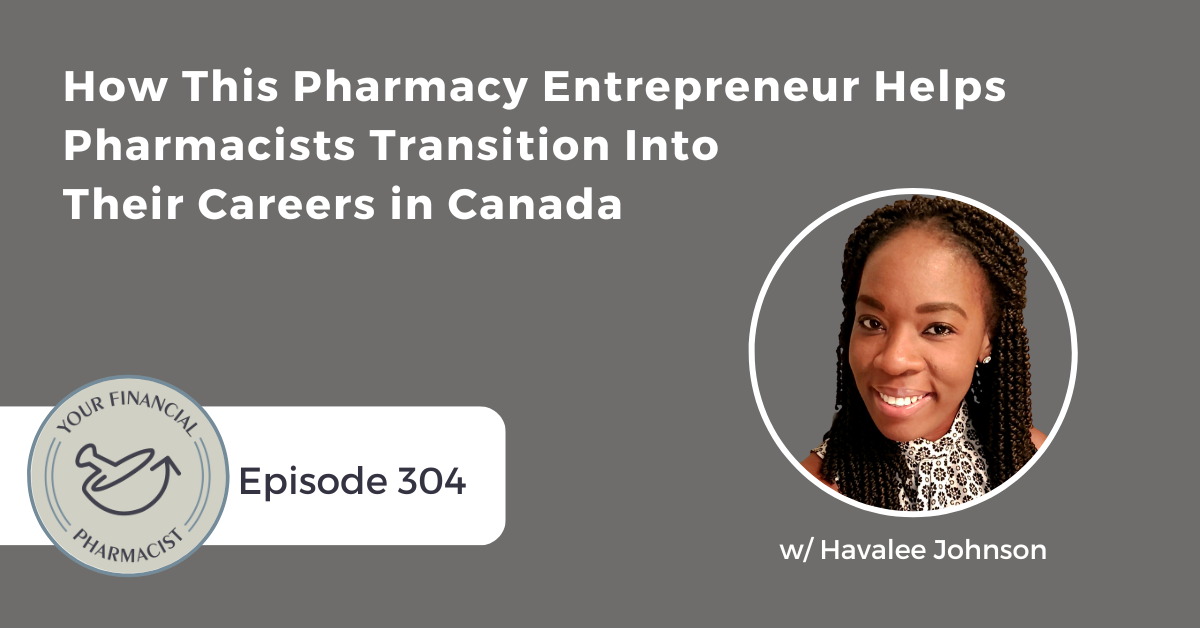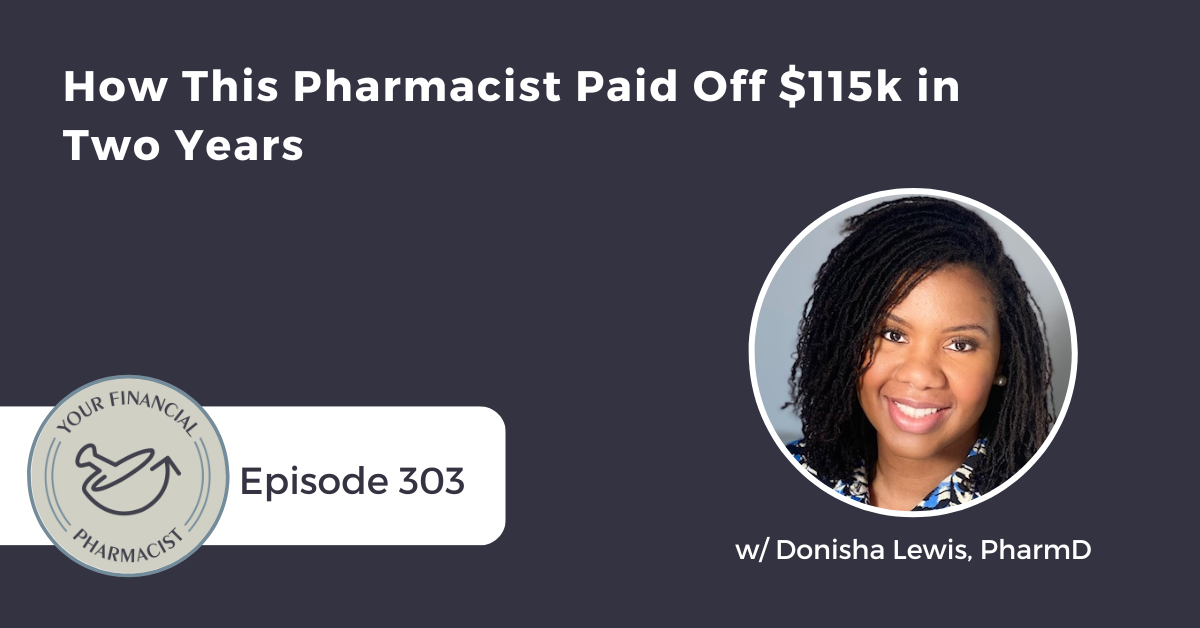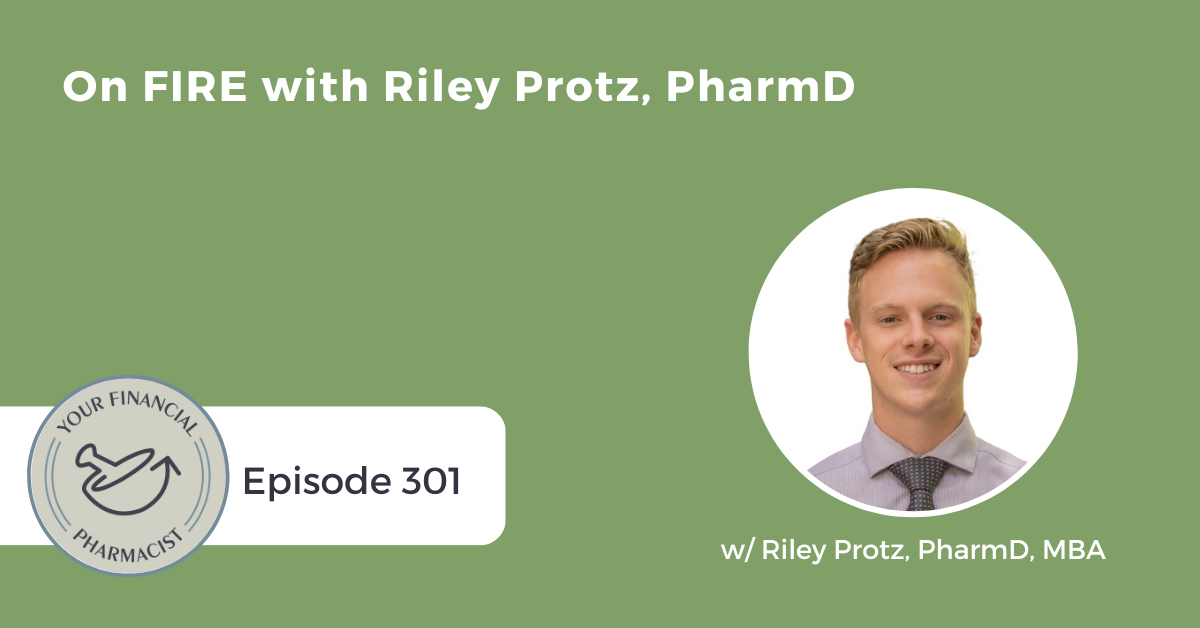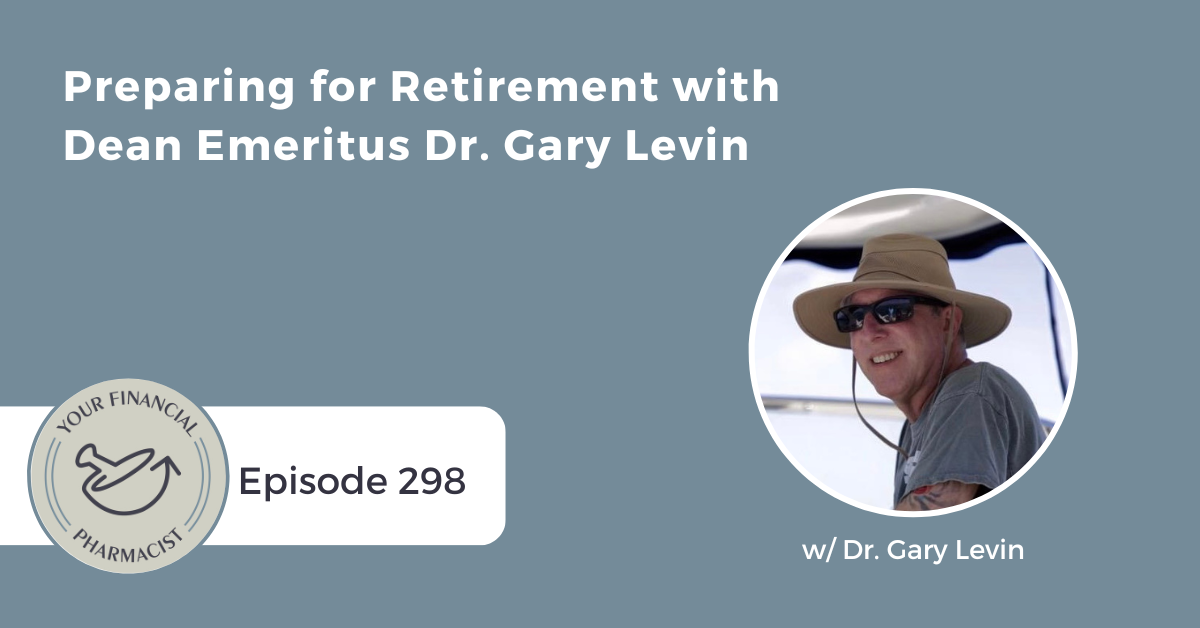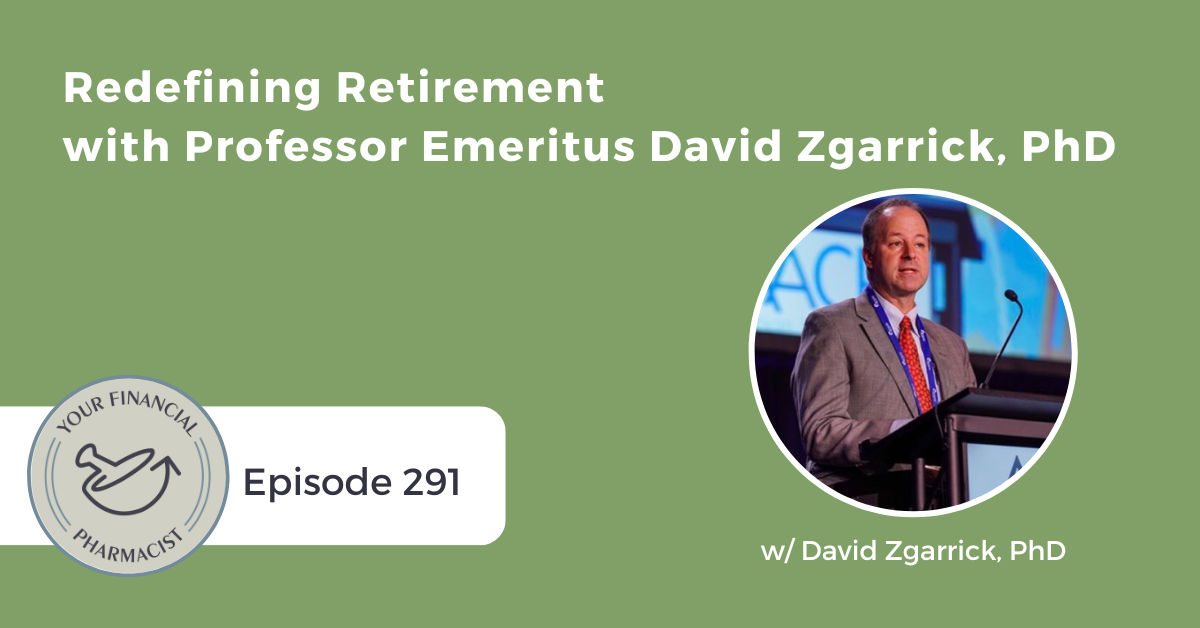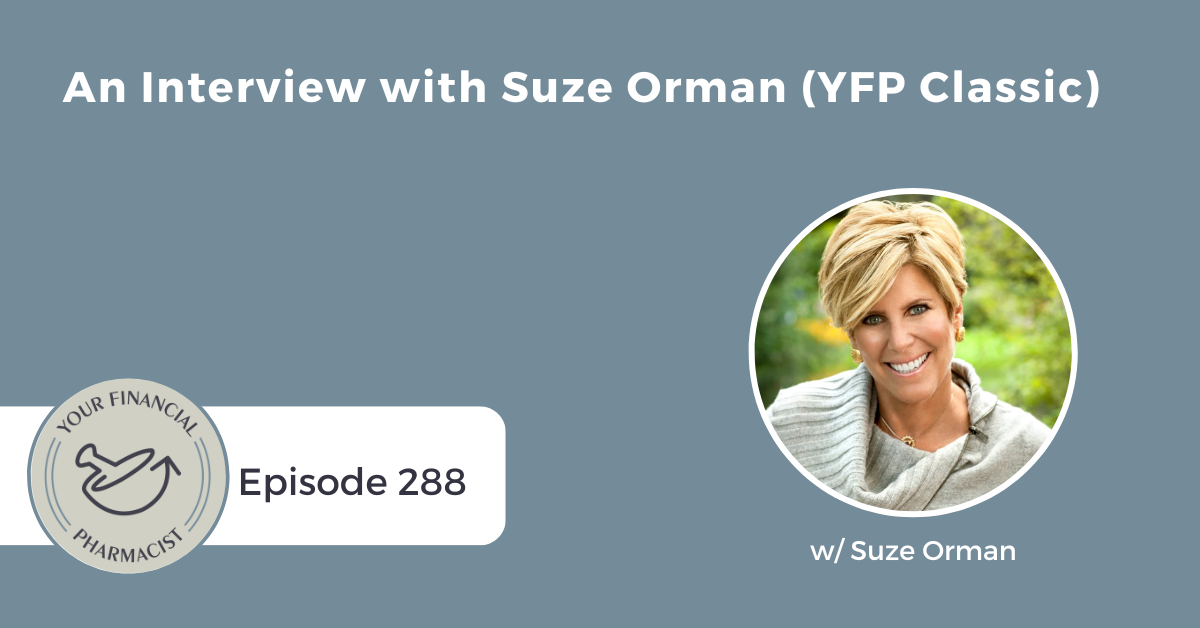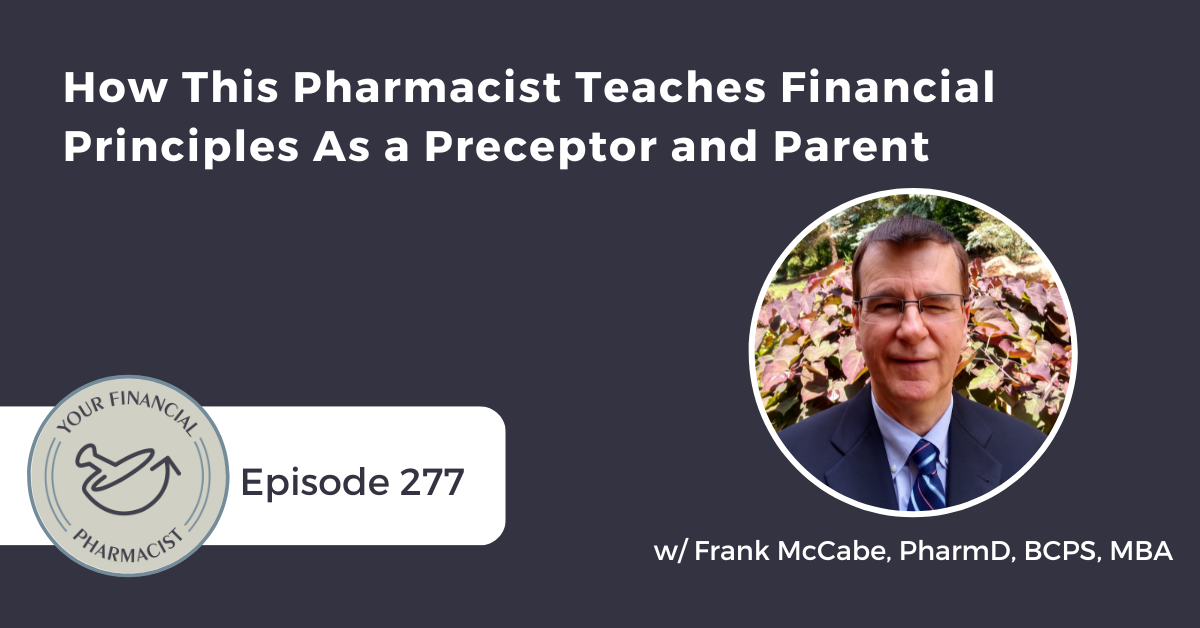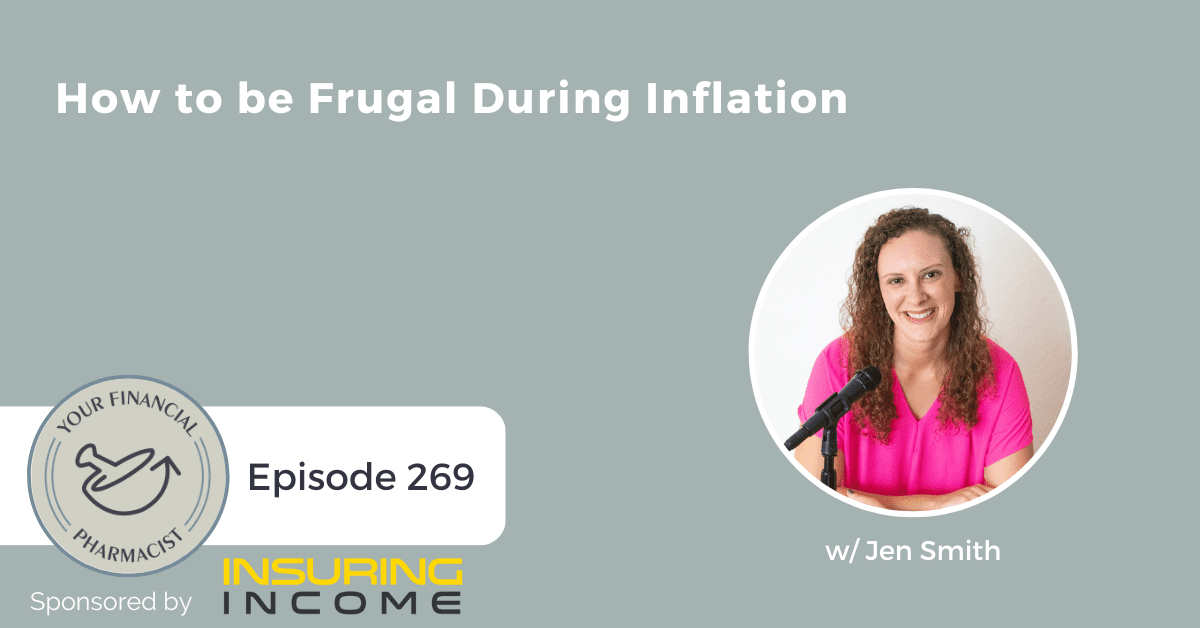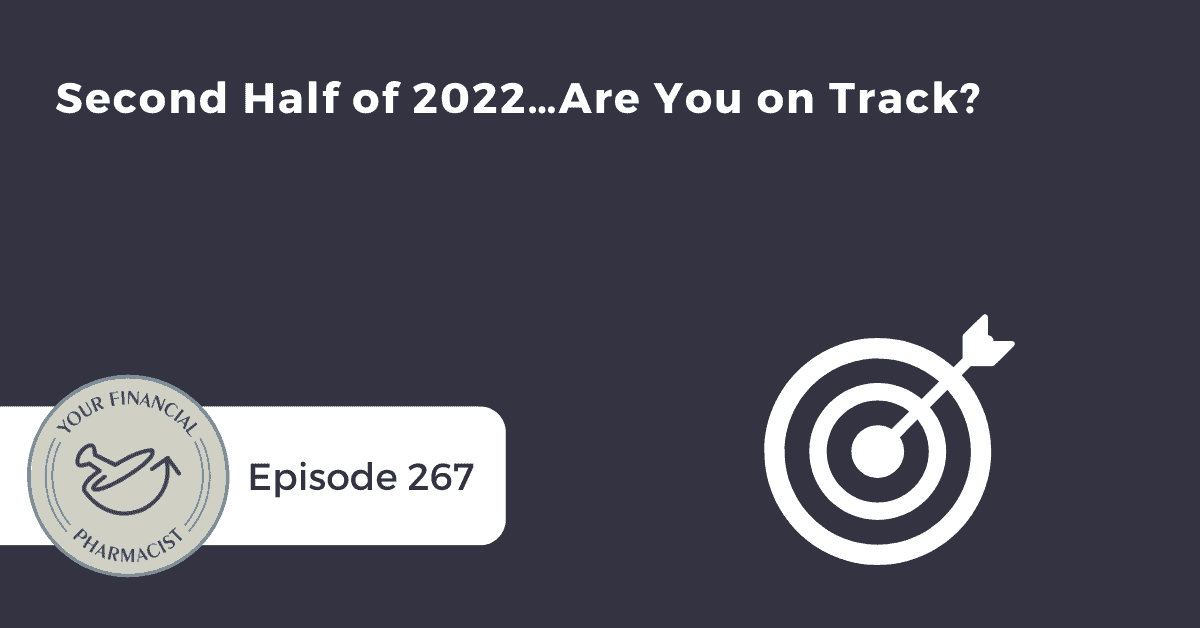Havalee Johnson, pharmacist and Founder of Immigrant PharmAssist, shares how and why she made the move from Jamaica to Canada, how her business helps immigrant pharmacists transition into their careers in Canada, and her business goals.
About Today’s Guest
Havalee is a Jamaican immigrant in Canada. She holds dual pharmacist registrations in both countries and has a combined 8 years of practice experience. Feeling the need for growth and expansion in her life and career, Havalee successfully pursued her pharmacist licensure in Canada, completely self-sponsored, and moved from Jamaica to Canada at the onset of the COVID-19 pandemic in early 2020. She seamlessly transitioned and integrated into the Alberta healthcare system where she practices as a clinical pharmacist. Havalee is people-centric and multi-passionate and loves to help, empower and inspire others. Noting the myriad of challenges encountered by pharmacists’ peers and colleagues who have been unsuccessful in their many attempts to transfer their licenses to Canada, Havalee is on a mission to support and assist as many immigrants as possible. Through her business Immigrant PharmAssist, she helps international pharmacist graduates (IPGs) successfully navigate and accelerate through the licensure process so that they can smoothly transition into their lives and careers while thriving as newcomers in Canada.
Episode Summary
Havalee Johnson is a pharmacist in Alberta, Canada, and her new company, Immigrant PharmAssist, focuses on helping fellow pharmacists transition to a pharmacy career in Canada. After explaining why she stepped into a career in pharmacy, Havalee gives details on her community pharmacy experience, why commitment is one of her most important values, and the financial strategy she implemented to make the move from Jamaica to Canada. Havalee then opens up about what she wishes to accomplish with PharmAssist, whether pharmacies in Canada and America are going through the same struggles, common misconceptions that she encounters about moving to Canada, and where her business needs to be in the next three years for her to consider it a success.
Key Points From the Episode
- A warm welcome to today’s guest, pharmacist and entrepreneur, Havalee Johnson.
- Havalee’s background in pharmacy, including where she trained and her first job after school.
- The community pharmacy experience that made her enroll in pharmacy school.
- Why the John Assaraf quote about commitment resonates with Havalee and her life’s journey.
- Havalee’s reasons for immigrating to Canada.
- Her financial strategy for moving to Canada, and her unique relationship with money.
- The problems that she is trying to solve with her business PharmAssist.
- Why Canada is an attractive destination for pharmacists to consider.
- Whether pharmacies in America and Canada are experiencing the same challenges.
- Common misconceptions that aspiring pharmacists have about moving to Canada.
- Where Havalee wants her business to be in three years to consider it a success.
- The mindset shift that has had the biggest impact on her life since moving to Canada.
- What Havalee does to reenter herself when she feels overwhelmed and out of focus.
Episode Highlights
“I’m a very committed person. And it’s not just in my professional life, it’s in every area of my life. If I have an appointment with someone, I’m going to make that commitment; I will show up for the occasion. If I have to do something, I just get it done.” — Havalee Johnson [08:47]
“When other people are having challenges or they have this sort of mindset that things will not work out, it’s because their level of commitment is not in alignment with what they think they truly want.” — Havalee Johnson [09:18]
“There’s so much wealth and information tied up in knowledge. It is very indispensable.” — Havalee Johnson [18:05]
“I worked, I saved, I bought the things that I needed to buy. I didn’t focus on the things that I wanted. It’s called delayed gratification. A lot of us know about it but we don’t subscribe to it.” — Havalee Johnson [18:40]
“It is not a matter of resources, it’s a matter of being resourceful.” — Havalee Johnson [27:39]
“I’ve embraced the fact that if I want to get to where I want to go, I need to do things differently and I have to invest in me. And not just investment in terms of monetary investment, but invest in my mindset, in up-leveling my mindset.” — Havalee Johnson [34:23]
Links Mentioned in Today’s Episode
- YFP Planning: Fee-Only Financial Planning for Pharmacists
- John Assaraf
- Dr. Lauren Castle on LinkedIn
- Tim Ferris
- The Big Leap by Gay Hendricks
- Purpose is More Than a Side Hustle by Joe Colavito
- The Redefining Wealth Podcast
- Havalee Johnson
- Havalee Johnson on Instagram
- Havalee Johnson on LinkedIn
- Havalee Johnson on Facebook
- Tim Ulbrich on LinkedIn
- YFP Disclaimer
Episode Transcript
EPISODE 304
[INTRODUCTION]
[0:00:00.4] TU: Hey everybody, Tim Ulbrick here, and thank you for listening to The YFP Podcast, where each week, we strive to inspire and encourage you on your path towards achieving financial freedom.
This week, I welcome to the show, Havalee Johnson, a pharmacist-entrepreneur from Jamaica, who helps pharmacists transition into their careers and thrive as newcomers to Canada. During the show, we discuss why she decided to move away from her family and hometown in Jamaica to live and practice some 2,000 plus miles away in Canada, some of the biggest misconceptions that folks have about moving to Canada as a licensed healthcare professional and the steps that she took financially to pay off her student loan debt, her car, accumulate savings, and to ultimately fund the move and transition to Canada.
Now, before we jump into the show, I recognize that many listeners may not be aware of what the team at YFP Planning does in working one-on-one with more than 280 households in 40-plus states. YFP planning offers fee-only, high-touch financial planning that is customized for the pharmacy professional. If you’re interested in learning more about working one-on-one with a certified financial planner may help you achieve your financial goals, you can book a free discovery call at yfpplanning.com.
Whether or not YFP Planning’s financial planning services are a good fit for you, know that we appreciate your support of this podcast and our mission to help pharmacists achieve financial freedom. Okay, let’s jump into my interview with Havalee Johnson.
[INTERVIEW]
[0:01:29.4] TU: Havalee, welcome to the show.
[0:01:30.6] HJ: Hey Tim, thank you for having me.
[0:01:33.1] TU: Really excited to follow up on the conversation from a couple of weeks ago to share what you shared with me, which is a really cool career journey and I think an inspiring story for many with the work that you’re doing now with pharmacists. We’ll get to that here in a little bit.
Let’s start with your career journey. What led you into the profession of pharmacy, where did you do your pharmacy training, and what was your first job out of school?
[0:01:56.1] HJ: Oh, that’s interesting. So interestingly, my first job, I will start with that one, my first job was in a pharmacy, that I think propelled me into my career being a pharmacist because I never wanted to be a pharmacist growing up. So my back story is that I was born and raised in Jamaica.
I lived in Jamaica for pretty much my entire life until I moved to Canada at the start of 2020, and that’s where I also did my training in Jamaica, at the University of Technology. I did my undergrad studies with my bachelor of pharmacy degree. So it’s interesting that I never thought of pharmacy, it wasn’t on my radar.
But as a student in high school, we were required to do some voluntary work prior to graduating and it so happened that I volunteered at the hospital’s pharmacy. So that was my first introduction to pharmacy but I never thought anything of it then. But after I completed six form, which is the equivalent of community college. In Jamaica, you can go to six form if you’re in high school.
You do your A-level studies and then you move into university. One of my colleagues was like, “My mom was saying pharmacy is a cool profession and all this stuff.” I was like, “Pharmacy? No.” I actually wanted to become a linguist. I was the Spanish student, I was the math student, and I did a mixture of the sciences and the arts. But as I’ve told you before, Tim, when we met, that I’m very multi-passionate and a multi-potential.
So I could just basically segue from pharmacy into just about anything, which to me that right now is really exciting. I started my pharmacy career in Jamaica where I practiced for five years before moving to Canada, where I interestingly transferred my pharmacist license and I practice as a pharmacist in Canada as well.
[0:03:45.1] TU: What I like about what you just shared there, Havalee, is that pharmacy is a part of your story, it is not the only story, right? So it’s an important part of the journey, you’re obviously helping other pharmacists but you know, you mentioned you can pivot in different directions. We’ll talk about the value of diversification here in a little bit and if I heard you correctly, it was a hospital experience that led you into pharmacy school. But you would end up practicing in community for a while, is that correct?
[0:04:11.0] HJ: Yeah. So after high school, so we had financial challenges growing up and my mom was basically a single parent and my sister went to nursing school prior to me going to pharmacy school, and she was like, “I can’t afford to send you both to university at the same time. So you have to work for a year.” And I was like, “No way, I’m not working.” Because for me, school was the only thing that I knew and actually, I found my value and my education.
As I told you from my back story that I never felt worthy, and I was told growing up that I was ugly. So, I just buried myself in academics. So when my mom told me I had to work prior to going to university, I was crushed. And I thought she was actually kidding but she was serious. So she went and got me a job basically. She made recommendations because she loves to talk about her children and she found a pharmacy owner.
She was like, “My daughter, she’s very brilliant, she’s interested in starting in pharmacy.” I did not want to go to work in a pharmacy. I wanted to go to university and I did an application to the pharmacy owner. That’s an interesting part of my story, we’ll have to talk about that another time, but it was my penmanship that was the hook. Like, my penmanship is really great, if I may say so myself.
So the owner saw my penmanship and he’s like, “I need to meet this person” and so I interviewed. My personality and I fit right into the pharmacy setting. I worked there for 15 months as a pharmacy assistant. So that was my first introduction to business as well because I got to do a little bit of cashiering, I did the OTC stuff, I got to do account reconciliation, I got to do just about every little thing in the pharmacy.
So I was like a floater and I worked there, but the impression that was left upon me by the pharmacist, who was the chief pharmacist at the time, her name is Alicia. Alicia, she was very impressionable. She was very proficient. She was very professional and I like the way she dealt with the parents, and that was my inspiration for going to pharmacy school. I wanted to emulate her and I was like, “Wow, this is really nice.” I enjoyed my 15 months there and I apply for pharmacy school.
Interestingly, I applied for pharmacy school prior and they didn’t have any space and they’ve gotten a letter, an email, a letter saying that I didn’t meet the qualification requirements. I reapplied the following year and I got through but all they needed to tell me was that they didn’t have any space. They didn’t have the capacity but I applied, I reapplied because I’m not the person who gives up easily. With the same credentials, I got in and then I had a whale of a time.
I suffice to say, I mentioned earlier that we had financial challenges and then the pharmacy was how I got through university. My mentor, my support system came through the pharmacy and that was how my accommodation was paid for. That was how my books were taken care of, that was when I got my first laptop.
I was 20 years old when I got my first laptop and just looking back now, it’s amazing to see how far I’ve come since then. Yet, that’s how I got through pharmacy school and I mentioned my friend Alicia the pharmacist, every single month that she got her salary, she sent me some pocket change, every single month, and I just feel so blessed.
[0:07:32.9] TU: Let’s make sure Alicia hears this episode, we’ll have to share it with her as you give a shout-out to her. But one thing that really stood out to me when you and I talked a couple of weeks ago is, you know, I have the opportunity to talk with different pharmacists, pharmacy owners, entrepreneurs all across the country every week, which is an incredible part of the job and the work that I have and doing the podcast.
But something really stood out about our interaction. I think it was your mindset, it was your passion, your enthusiasm, your resilience, you described that a little bit, your optimism, it’s contagious. And you shared recently on LinkedIn a quote by John Assaraf. You said, “If you’re interested, you will do what’s convenient. If you’re committed, you’ll do whatever it takes.” Tell us more, why does that quote resonate with you and resonate with your own journey?
[0:08:23.3] HJ: It absolutely does. Thank you for bringing that up. I tend to forget the things that I put out there sometimes because I’m just, you know, going from what’s inside that I wanted to share. But again, I buried myself in my academics and I found that for me, things just seemed so easy. And it’s just when persons are approaching me and asking, “How did you do this, how did you accomplish this?” that I realized that I was a very committed person. And it’s not just in my professional life, it’s in every area of my life.
If I have an appointment with someone, I’m going to make that commitment, I will show up for the occasion. If I have to do something, I just get it done. So there are no entrances and even if there are obstacles along the way, it doesn’t prevent me from going ahead because I’m so committed to whatever task it is that I have in front of me, whatever commitment that I’ve made. So, when other persons are having challenges or they have this sort of mindset that things will not work out, it’s because their level of commitment is not in alignment with what they think they truly want.
So I thought that quote was fitting for the post that I did. I didn’t realize that it had gone over on to your platform as well. So thank you for the reminder, but I’m actually very committed and it makes the process much easier. It makes things — like, you don’t focus on the problems when you’re committed, you find creative solutions, and one problem has more than a thousand solutions if we were to go through and think about it logically.
[0:10:01.2] TU: Yeah, I mean, mindset really matters, right? I think that’s what you’re alluding to there and you could have two people that are facing a very similar problem but how they approach it and how they receive that challenge can be night and day. I had a chance to talk with Lauren Castle recently on the podcast, who is the founder of The Functional Medicine Pharmacist Alliance, and she talked about a book that its purpose is not a side hustle.
Meaning, what you said is, we bring our purpose and our intentionality to every single interaction, every single day. Now, easier said than done, right? And I often wonder, “Hey, what would the day look like as a parent, as a father, as a business owner, what would it look like if I did that every moment?” But such a good reminder.
Let’s talk about your transition to Canada. So you mentioned your upbringing in Jamaica. After pharmacy training, you worked a little over five years in community practice and then ultimately, you make a bold decision to move 2,000 plus miles to Canada, away from your home country, your family, your friends, your professional network. Why, what led you to that decision?
[0:11:07.0] HJ: I just don’t, it just came out of nowhere. I think Canada for me signified not security, because there’s not security anywhere, but Canada had some of the things that I desired as an adult. For example, growing up, our healthcare system is not the best. I’m not here to criticize our healthcare system but I lost my dad through him having health challenges going through dialysis, kidney failure, we couldn’t afford the dialysis.
I recognize that in order for me to serve people, I need to be healthy and I need to have that access. I’m not focusing on being ill but if things were to happen, if things were to hit the ceiling, I want to know that I have the accessibility. Also, when I completed pharmacy school, I got a statement for three million Jamaican dollars for my student loan debt.
I was like, okay, I didn’t come from the typical middle-class or upper-class family that had the financial means to send me to school. I had that. I was like, “Okay, I need, when I start my family, for my children to have access to work less education.” That was one of, again, these things were my deep why’s. Why I decided Canada.
Canada is underpopulated and they love bright young minds. I should just try for Canada and I had that thought when I went into the pharmacy. The first pharmacy I worked in after I got my license, my boss actually, they were selling the pharmacy and they were like, “Are you interested in buying?”
I’m like, “No, I’m on my way out of here.” I just told her, “I’m on my way out of here.” That was 2015. I didn’t know how, I didn’t have any connections. At that time, I had persons telling me I needed to go back to school and here I am, in three million dollars worth of student loan debt, now I’m at the phase in my life where I think I need to acquire things, which no, in retrospect, I didn’t need to acquire things. I need to acquire experiences instead.
So I had Canada in mind and I made it happen. I was committed, I did whatever it took. I had the two jobs. I was trying to be very savvy with my finances because again, we had the challenges of not having things that other children had that you probably, why you would have had but no, I’m like, it’s okay. I didn’t really need them but the mind of a child is totally different from the mind of an adult.
When you’re a child, you’re very impressionable and we have very receptive minds but as an adult, you know that you might need to be receptive as well as fertile and the things that we allow into our spaces has to be totally different from the focus we had when we were much younger.
So, I had Canada in mind and I’m like, “Okay in Jamaica, you get two months maternity leave when you start your family” and I was like, “That’s no time for you to nurture and care for an infant” and I’m like, “Okay, Canada, you could get up to a year as maternity leave” and also the scope of practice.
I was frustrated at times, so I had to do a year’s internship in the hospital after pharmacy school and I was frustrated with the way things were systemically, like the things that patient — I’m very passionate about patient care and I’m an advocate for people because I treat people the way I would want to be treated, the way I want my family members to be treated. And they have to go through too many hoops and hurdles to get even a registration number and a prescription, for example. These are things that I would have done differently but I’m not in administration.
I’m not in a certain position to implement those changes. So when I completed my internship, I said, “I cannot work with this system because it’s not in alignment with me.” And then going into community, I had so much autonomy and my boss’s wife is a pharmacist and my boss. They respected me, they allowed me to practice to my fullest scope but my scope was still very restrictive.
If the doctor wasn’t available, I couldn’t fax, I could make changes to the prescription. I love that about Canada, because the scope of practice here is that much greater. You can adopt a prescription, you can prescribe for a minor ailment, you can order labs, you can see the patient’s actual lab results, and that to me was exciting and that was one of my reasons for wanting to move to Canada as well.
[0:15:29.1] TU: And when you take a bold move like that, whether it’s moving from Jamaica to Canada, whether someone decides they’re going to start a business, which you did that as well. We’ll talk about that here in a little bit. But any bold move I think often requires one to feel like they’re in a sound financial position to make that move with confidence, and I talk about this in the show all the time.
If you’re starting a business, not that we need to have every single T crossed and I dotted with our financial plan, but we want to have some level of a foundation that we can approach that business with confidence, and not be having the stress and anxiety of personally not being where we need to be. So I ask that because, for you, you shared with me before that you paid off three million dollars in Jamaica debt from pharmacy, which was equivalent to about 30,000 in Canadian, is that correct?
[0:16:20.1] HJ: Correct.
[0:16:21.1] TU: Paid off a car, you accumulated savings, there is cost of moving, what was the strategy for you to get yourself in the financial position to be ready to make that bold move?
[0:16:33.6] HJ: Thank you for that question. I think that my relationship with money is very unique. I used to say that I don’t know how my mom makes more than a hundred cents out of a dollar because she did it, and I think I got some of that from her in terms of being very savvy about my finances. The minute I started working, I said I’m going to start saving towards this Canada journey, and that’s what I did.
I earned, I took care of my obligations. So in pharmacy school, we actually learned about the reducing balance method. I’d never done any business subjects, I never done accounting prior, I learned about the reducing balance method. I applied that to my student loan and my debt payoff but I also did it smartly. I also referenced my friend Alicia. She allowed me, whenever I needed to do any business transaction, not business but any personal related transaction if I wanted to travel to buy an airline ticket.
She was the person that got the credit card print posts from. You use, you pay on time and in full so you don’t accumulate an interest, and then I just started learning that, “Okay, if I use it directly after the due date, I get at least 51 days to make that payment.” Because the date for the statement will come and then you’ll have time to pay. So I adopted that from Alicia, that was where it started initially and then I started reading the financial section of the local newspaper.
There’s so much wealth and information tied up in knowledge. It is very indispensable and I did that, and using my credit card to pay down my student loan was a part of my strategy because I had a credit card that had cash back. So I would pay the student loan and I’d get back some of the money and I built up great credit. I honestly never checked my credit back in Jamaica, but I knew that my credit was great because I started out with a credit card of USD 100,000 in 2016 and by 2018, my credit limit increased to over a million dollars.
So I worked, I saved, I bought the things that I needed to buy, I didn’t focus on the things that I wanted. It was called delayed gratification. A lot of us know about it but we don’t subscribe to it . And just being very disciplined in my finances, paying my debts, honoring my financial obligations, doing everything that I needed to do, it allowed me to save and I also set up, I didn’t even know for sure but I invested in a life insurance investment policy.
I just heard about this in financial advisor. I called him up and met with him, he explained some stuff to me, then it was just all his. I didn’t understand what were mutual funds, I didn’t know the jargons, I didn’t know what was going on behind the scenes but I knew I needed to make plans and preparation for my future. So I invested in a policy and I started saving every single month from my salary.
I told myself, “This is my retirement plan” and over a period of time, it accumulated so much funds. I was like, “Whoa, this is amazing.” It is amazing to see the tiny steps that we take, and over time, we adapt quickly and I think that was a very big thing for me. But I think it really boils down to me being the disciplined person that I am with my finances. I have never paid any money for credit card interest while I work in Jamaica. Never.
I paid on time, in full, and over a two-year period, I got back over USD 130,000 in cash back just by using my credit card.
[0:20:19.6] TU: It makes sense when you’re paying big student loan payments, right? And the cashback of that. So I’d like what you share. I think there’s a couple of things that really stand out there, your relationship with money and really, understanding what is that, where does that come from, our upbringing typically, what are the good things that we have a positive relationship with money, what are the not so good things.
Being aware of that and then really, what I heard is a lot of discipline in setting your goals and being intentional with how you were going to achieve those goals, which obviously, allowed you to make some of the transitions and move that you did make.
I want to shift gears and talk about the work that you’re doing through PharmAssist and as you say on LinkedIn, “I help pharmacists transition into their careers and thrive as newcomers in Canada.”
So two questions for you here, what problem are you trying to solve with this business, and what benefits does living in Canada for pharmacists, that it may be an attractive option for people to consider?
[0:21:17.0] HJ: Thanks for that question, Tim. So in my business, actually I just studied shortly a backstory, PharmAssist started off as a podcast but it was a podcast to help patients, because I wanted to use my voice that I wanted –
[0:21:29.9] TU: I saw that, I found it, yes.
[0:21:32.4] HJ: You did? I wanted to utilize my voice in a way that could be meaningful and impactful. I’ve always stayed away from public speaking, anything that required me to be in the spotlight. So, I started PharmAssist but I didn’t, at the time, know how to get in front of the right audience, but it was well working in pharmacy. I’ve noticed certain trends, I saw the frustration, I heard the stories.
I’ve met several international pharmacists who were struggling and when I say struggling, in terms of transitioning into their careers in Canada. They’re already in Canada but their credentials have not been recognized. And if you have noted recently on my platform, I’ve been talking about decredentialization, having high credentials is not yet recognized. So you end up doing survivor’s jobs and so your income earning potential has been significantly diminished.
So what I aim to do is to empower especially persons who are coming into Canada to let them know, “Hey, there is a possibility for you to transition smoothly into your career.” You can take an alternative route than coming to Canada as an international student, which is I believe one of the most expensive roads to come to Canada, or even coming and not having your degrees transferred, getting, passing your board exams.
Getting your pharmacist license recognized so that you can continue in your practice to create impact but also to make an income so that you can have a higher standard of living. I successfully transferred my license and I started while I was working in Jamaica, because I was so fortunate I had the discernment to know that if I move to Canada prior to getting my license, I’m going to have to move into the fast lane, but also be doing menial jobs, low income, so I might end up burning out.
I need to be doing maybe two or three jobs just so that I can survive because when you convert the dollar, it’s totally about being a millionaire in Jamaica. I’m a ten thousand-narian in Canada. A million Jamaican dollars is 10,000 Canadian. So it doesn’t stretch very far, especially with the cost of living. I wanted to help those international students who have the misconception that they need to first move to Canada and get their credentials transferred.
But if their desires or they desire to move to Canada, there is a way for you to zone in focus on passing those exams and getting into practice because statistics show that it’s in the low 40s the amount of international students who pass the exams, the statistics are very low. I think, again, it’s because of lack of knowledge. People are not aware of the commitment that they need to make to pass the exam.
The investment that they need to make to get through the programs that they need to go through so that they can, and I believe every single pharmacist across the globe, they are capable of going into their careers in Canada successfully, it’s just that they don’t know the right strategy. They need someone to maybe hold them accountable, someone to show them what pathway they need to take, what direction they need to go. They just probably need like a human compass and I think that’s where I stepped in.
[0:24:55.8] TU: They need a guide, right? They need someone that will help them along. I’m curious, our listeners know very well that there’s many challenges right now in community retail practice in the United States in terms of burnout and expectations and staffing. There’s obviously a lot of work that’s being focused in advocacy on that.
Because of that, are you seeing interest from pharmacists in the US potentially moving to Canada as well, or are those same challenges we see in community retail practice here in the US, are those very similar in Canada?
[0:25:28.7] HJ: I have seen interest from pharmacists in the US who want to move to Canada for a myriad of reasons including — it’s like in the US, where it’s state-to-state practice, each state they have their own scope of practice or their own regulations. It’s the same thing in Canada with provinces, but a province like Alberta where I was practicing, we have a wide scope of practice.
So it may be for the scope of practice, it may be to escape the burnout. The thing about pharmacy practice in Canada as well, because immigration, and people are coming in full force. A lot of people are migrating to Canada then the workload becomes that much heavier as well. So there is burnout being experienced by pharmacists in Canada as well but it depends on the settings.
It depends on whether you’re working with a corporation or if you are working for an independent, or you could be working in just about any setting. But I don’t know if the challenges that are being faced in the United States if it’s that the same magnitude in Canada. Again, the cultures are very different, things are quite subtle here and maybe Canadians, they don’t want to seem as if they’re complaining.
But a lot of the challenges that people are experiencing in the US I can say that, from my own experiences, that some of them are similar in Canada. It’s just that people are not advocating at the level that it’s been done in the US.
[0:26:59.4] TU: Havalee, as you are talking to people that might be thinking about making the transition as a pharmacist to Canada, I suspect you hear from a lot of folks that their interested but they may have some type of misperception about what that transition may look like. Is there a common one that typically folks have that might hold them up in their journey?
[0:27:18.4] HJ: Yes, Tim. So one of the most common misconceptions that persons have in terms of transitioning into their careers in Canada, they believe that they don’t have the money to get it done. They don’t think they have the financial needs. And I am here to tell them that, like my coach said to me, it is not a matter of resources, it’s a matter of being resourceful. So a lot of these folks who, they will say, “I am going to pursue the school road, I am going to apply for school.”
And this is where the misconception comes in, because it is more expensive for you to apply as a student than it is to apply to transition into your career as a pharmacist, and even to move to Canada as a pharmacist, as a skilled educated professional. And this is not limited to pharmacy alone. I’ve had just today a connection on LinkedIn sent me a message saying, “Hey, I came to Canada as a student and it lasted for three months and then I just spent my six months and I returned home because it was so expensive.”
The connection just said, “I spent 15k.” And if you are moving to Canada as a skilled, educated professional and you are a single person, you need about 14k to show the government proof of funding, about 14k. If you come as a student for one semester for three months, that’s 15k. You will not see that money again. The money for a year of residency, you will get to keep that money.
So the misconception is, “I need to come as a student, ride along on the struggle bus, and then struggle to get my credentials transferred, and then five years later, I’m still not registered.” I’ve had a colleague in pharmacy who has been in Canada for 10 years and still unregistered. I’ve had a colleague who’s been in Canada for four years and still unregistered. Another misconception if I may is that the exams are too hard.
Because the statistics are low, it doesn’t mean that it’s not passable. You just need to have a strategy, you need to have a plan, and you need to have your commitment. You need to have these things in place and once you pursue the exam, it’s kind of like going to pharmacy school, there’s no difference. You go through the exam, you pass your exams, you can transfer your licenses. So those are two of the biggest misconceptions that I have had.
[0:29:48.8] TU: Havalee, I am curious, since you are on the front end of this business journey, which I think many people will find refreshing hearing some of the early experiences you’ve had of starting the business. I’m curious, as you think out let’s just say three years as a marker, what does success look like for you three years from now?
Personally, with the business, I mean, I’m sure there is a lot of overlap there but as you’re at the beginning of this and obviously, you’re in the day-to-day, you’re kind of in the weeds, you’re thinking about growing it. But I know when I have these conversations there’s often these feelings of, even if it’s not clear, I kind of see the vision of where things are going. What does that look like for you in three years?
[0:30:26.5] HJ: In three years from now? Wow. I see myself running a very well-organized, fully-automated, technologically included business that merges healthcare with immigration. In three years, I see myself there. I see myself onboarding more people to solve the many problems that we have, whether it’s in the health system and also to help a lot of people to change their lives. The way immigration and moving to Canada has changed my life, I want that other person to have a similar experience and especially if they have a family.
They will get that social support and also to help them to up-level in their finances. I could introduce them to Tim. I was like, “Tim is a financial pharmacist.” Yeah, so in three years from now, I can see myself positioning myself in the marketplace as the go-to person for any internationally educated pharmacist as well as persons who are interested in migrating to Canada.
[0:31:29.8] TU: I love that. Here’s the reason why I asked that question, well one, I’m curious but two, as I talk with a lot of aspiring or early pharmacy entrepreneurs, I’m often encouraging them like you’re in the weeds, you’re building it, you’re wearing every single hat of the business. That’s what you need to do when you get started but it’s so important even if you don’t know exactly where things are going to go, because none of us do.
This will evolve over time. It is so important to have even a fuzzy north star of what is this vision for a couple of reasons, one, that gives us the focus of, “Does the activities I’m working on, the products and services I’m developing, how I’m spending my time, does that line up towards that vision?” And obviously gives us clarity to the messaging that we have both for ourselves as well as externally.
Then I think it also provides a really important source of motivation, right? Because something you just shared there highlights that so well. You said, “In three years I really see running a well-oiled technologically included business with a lot of automation that is focused on the intersection of immigration and healthcare.” Now, pharmacists moving and practicing in Canada, that can be one piece of that business, right?
But the intersection of immigration and healthcare is a much bigger vision and obviously, you are taking a very important first step right now. So I love that you’ve thought about that. I think it is such a good example of what are the things that I am doing right now, the steps that I am taking, the efforts that I’m moving, the products and services I’m developing, and how does that align with where I want to see things going in three to five years, so really cool.
Thanks for sharing. I want to wrap up by asking you two questions, which I have stolen from Tim Ferriss who ask some really great questions on his podcast. That first question is, in the last let’s say couple of years since you’ve made this transition, what new belief, behavior, or habit has had the most significant impact on you personally or professionally?
[0:33:34.0] HJ: So over the last five years or let’s say ten years, let me just even say even three years, a lot has shifted for me both personally and professionally and I’ve had to embrace a new mindset, I’ve had to embrace a new philosophy and I’ve had to become a student. I have had to question my belief system and the things that I grew up knowing. I’ve had to unlearn a lot of the things, unlearn the belief that I wasn’t worthy enough, I wasn’t good enough.
That there were limited supplies of everything out there when there actually is an abundance. I’ve had to retrain my brain and I’ve gotten into personal development. But one of the things that I’ve done most is embrace the fact that if I want to get to where I want to go, I need to do things differently and I have to invest in me. And not just investment in terms of monetary investment, but invest in my mindset, in up-leveling my mindset.
So, I’ve had to surround myself with other women in business, in a community setting where there are people who are empowering you and inspiring you and not just settling for mediocre things. I’ve had to make that shift and I’m so grateful that I’ve had, again, the discernment to know that. If I see things going on a particular trajectory and they want a different outcome, then I can. I have the power within to change that direction, so yeah.
[0:35:05.5] TU: That’s a really good one. I think it’s so important that we are aware of what are those external influences or the stories that we’re telling ourselves that are leading to some of those self-limiting beliefs and behaviors that we have. Well, one of the real examples of this, you probably see this all the time is you mentioned the 40% passage rate of that examination, right?
I can almost assure you that if you talk with someone that does not know that number and you know, maybe they are confident about this transition, they’re feeling good about it, they’re confident in their abilities and all of a sudden, you throw that number on them like I am sure you can see the confidence and the demeanor change, and all of a sudden the ceiling comes down of what they think is possible.
I think it is so important that we’re constantly examining where do these beliefs come from and why do I have this ceiling in my mind? We all have them, when we think about our goals over the next year even in 2023, even if we are challenged to think big, dream big, we all have a ceiling. It is just a really interesting question of like, “Where does that come and why is that there?” Gay Hendricks talks about this in The Big Leap, which is a great book that I kind of –
[0:36:12.5] HJ: That’s the book that I just completed, just completed.
[0:36:14.5] TU: Oh cool.
[0:36:15.6] HJ: Yes, talk about that ceiling and how when we get there, we tend to self-sabotage. I love that book, I love the concepts that it brings across.
[0:36:25.7] TU: My second question for you Havalee here again, stealing this from Tim Ferriss is when you feel overwhelmed or unfocused, what do you do to refocus and get yourself back on the right path?
[0:36:36.5] HJ: So, I tell people that I have a really short attention span but that’s not true. What I’ve come to realize is that I’m not focusing on the most important things that I need to get done, so I get distracted. I get sidetracked. Whenever I feel unfocused or overwhelmed, I first have to check my environment. What is it in my environment that I need to remove? What is it that I need to, what systems do I need to put in place? What habits do I need to reinstall?
For me, I listen to Patrice Washington’s podcast, where she said, “Clutter is a physical manifestation of chaos in your mind.” I check my environment to see if everything is organized, what do I need to clear out. I also try to do some brain dump, I do write out the things that just free up my mental queue. I also do journaling and sometimes I do meditation, I don’t do it often enough. I know I need to get centered and get focused and get realigned and write out the things that are most important to me.
What is it that I need to get done right now that’s going to have the greatest impact on the big goals that I have for myself and just to add to that, it’s funny that when I was operating in my imposter syndrome, that I felt fearless because I didn’t know that I had imposter syndrome. I was just smashing through goals and moving from one goal to the other and then when people were like, “Okay, so how did you do that?”
I was like, “It’s no big deal” because I was just operating. But now that I am more centered and becoming more aware of who I am and what I bring to the table, I am smashing through my imposter syndrome and just showing up anyway and trying to de-identify. It will take some time but try to de-identify, I need to divorce imposter syndrome altogether so that I can operate in my greatness and operate in alignment.
[0:38:38.5] TU: I love that reflection and I think the comments you have about clutter are really interesting. I found that as well that sometimes it needs to be a brain dump, sometimes it needs to be a physical organization of the space so that we can focus and align and get ourselves working on the thing that’s most important.
Other times I have found that sometimes we’re not working on the most important task, because typically there’s some fear that might be underlying us wanting to lean into that. We’re working on something that’s maybe a little bit easier or not as significant or that fear doesn’t reside is kind of an escape route, that typically fear of failure, but it could also be fear of our identity or what other people think, fear of success, exactly, so.
[0:39:20.2] HJ: I have experienced that myself.
[0:39:22.6] TU: Yeah, an important question for folks to reflect on, if you find yourself often not focusing on perhaps the most significant or meaningful work that you could be doing, what’s driving that and if it’s fear, what’s behind some of that fear? So Havalee, this has been awesome as I knew it would be. Where is the best place that folks can go to learn more about you and to follow your journey?
[0:39:44.8] HJ: Oh, absolutely. So I may be found on LinkedIn, Instagram, and Facebook. I go by my actual name Havalee, surname Johnson. On Instagram, I’m @havalee_89. On Facebook, I’m Havalee Johnson and that is in fact my real name. I’ve had persons reach out to me like, “What is your real name?” I say that’s my real name.
That it’s because a lot of persons have been scammed, a lot of persons have had encounters with people who are not authentic and so they’re questioning whether or not this person is real. Like out of nowhere Havalee showed up prior to March, April of 2022, I was a ghost on LinkedIn. I would not show up, I would not write anything, I would not advocate.
If Tim had asked me to appear on his podcast, well, he wouldn’t have known me but if he just mysteriously came across me and say, “Hey, would you like to be on my show?” I’d be like, “No.” I have passed up important opportunities in the past. So I appreciate being on your platform, Tim. Thank you so much for having me and it was so great connecting with you on LinkedIn, that’s where it started.
[0:40:53.2] TU: Thank you for saying yes and I hope folks will follow your journey. I’ve enjoyed it as well. So thank you for taking time to come on the show, I appreciate it.
[0:40:58.7] HJ: Thank you for having me.
[END OF INTERVIEW]
[0:41:00.0] TU: As we conclude this week’s podcast, an important reminder that the content on this show is provided to you for informational purposes only and it is not intended to provide and should not be relied on for investment or any other advice. Information on the podcast and corresponding materials should not be construed as a solicitation or offer to buy or sell any investment or related financial products. We urge listeners to consult with a financial advisor with respect to any investment.
Furthermore, the information contained in our archived newsletters, blog post, and podcast is not updated and may not be accurate at the time you listen to it on the podcast. Opinions and analyses expressed herein are solely those of Your Financial Pharmacist unless otherwise noted and constitute judgments as of the dates published. Such information may contain forward-looking statements, which are not intended to be guarantees of future events. Actual results could differ materially from those anticipated in the forward-looking statements. For more information, please visit yourfinancialpharmacist.com/disclaimer.
Thank you again for your support of the Your Financial Pharmacist Podcast. Have a great rest of your week.
[END]
Current Student Loan Refinance Offers
Note: Referral fees from affiliate links in this table are sent to the non-profit YFP Gives. | Bonus | Starting Rates | About | YFP Gives accepts advertising compensation from companies that appear on this site, which impacts the location and order in which brands (and/or their products) are presented, and also impacts the score that is assigned to it. Company lists on this page DO NOT imply endorsement. We do not feature all providers on the market. |
$800* Loans* ≥150K = $800 100-149K = $450 <100K = $350 | Variable: 5.28%+ APR (with autopay)* Fixed: 5.28%+ APR (with autopay)* *All bonus payments are by gift card. See terms | The "Kayak" of student loan refinancing, Credible displays personalized prequalified rates from multiple lenders | ||
$750* Loans ≥150K = $750* ≥50K-150k = $300 | Fixed: 5.49%+ APR (with autopay) | A marketplace that compares multiple lenders that are credit unions and local banks | ||
$500* Loans ≥50K = $500 | Variable: 4.99%+ (with autopay)* Fixed: 4.96%+ (with autopay)** Read rates and terms at SplashFinancial.com | Splash is a marketplace with loans available from an exclusive network of credit unions and banks as well as U-Fi, Laurenl Road, and PenFed |
Recent Posts
[pt_view id=”f651872qnv”]

